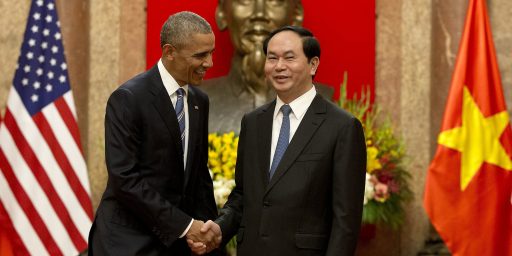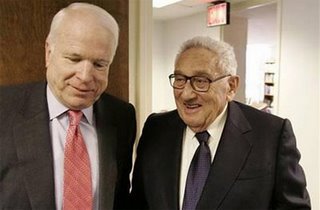War’s Cost Per Soldier Highest in History
War̢۪s cost per service member is highest in history (Army Times-AP)
With military costs since Sept. 11, 2001, now expected to exceed $300 billion, the Pentagon is spending more per service member to fight in Iraq, Afghanistan and elsewhere than it did during earlier conflicts. High technology, the costs of paying and protecting a modern soldier, and the worldwide nature of the war on terrorism are all possible reasons, experts say. “Every facet of military expenditure has skyrocketed since the Gulf War,†said Loren B. Thompson, a military expert with the Lexington Institute. “The biggest reason why is because the military is more and more a microcosm of the broader economy.â€
[…]
According to government figures, the war in Iraq costs about $4.3 billion a month, and the war in Afghanistan runs another $800 million. That money goes for a variety of things, including fuel, ammunition, hazard pay for the soldiers and repair and replacement of weapons and vehicles.
On average, the government spent a similar amount monthly on the Vietnam War between 1965 and 1975, according to figures, adjusted for inflation, from the Congressional Research Service. However, that figure is somewhat skewed, as the Vietnam War was far more costly at its height early in the war, from 1967 to 1970, than it was in the later years, when the U.S. presence was reduced. U.S. President George W. Bush̢۪s administration similarly hopes it can reduce the U.S. troop presence in Iraq in the coming year or two, if Iraqi security forces become more able to handle the insurgency.
Interesting if unsurprising. War is getting progressively more expensive. We made a conscious decision a generation ago to rely on volunteers, who we knew would be more expensive than conscripts. We soon adopted what became known as the “Offset Strategy,” spending billions on high tech weapons, trading gold for blood. It has, so far, worked phenomenally well.






Yes. Better equipment, unmanned reconsisance and drastically fewer losses. Well worth the cost, imho.
That’s been the American way since WWII and maybe before. We always believe in supplying massive amounts of equipment rather than having a huge army. We always shoot off tons of ordnance rather than risk soldiers’ lives.
Back in WWII, there are many German POW reports of how we would “unfairly” blast a place to bits with airstrikes and artillery before sending in the line troops. Of course, it’s the only sensible way to fight and they would have done the same thing if they could.
This is more conservative-religionist PROPAGANDA – Fox news no doubt –
How much of this money do any of you think ever gets down to the Infanrymans level. I can tell you, about 10%
the rest is going to Haliburton and the Bush Crime Family